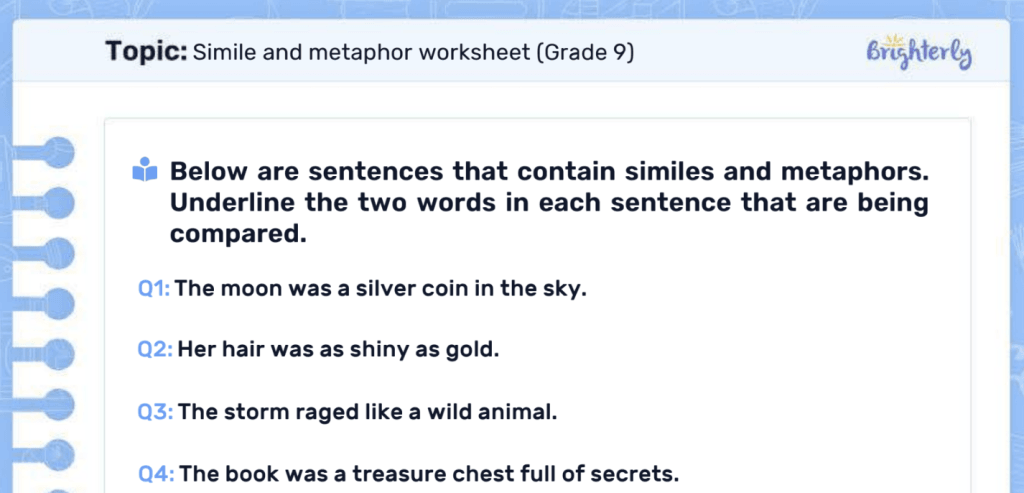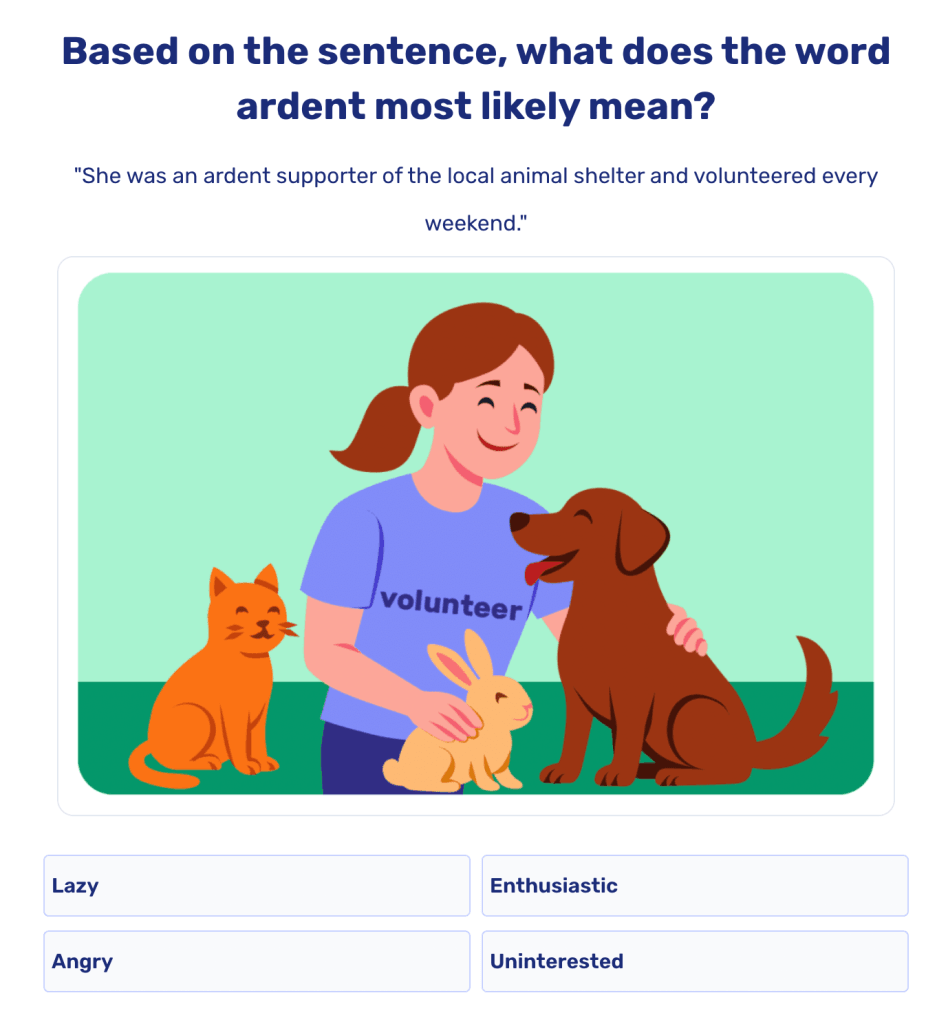Simile and metaphor worksheet
Updated on November 1, 2025
Figurative language gets easier with the right tools. So, with a simile and metaphor worksheet, students will learn to spot comparisons, interpret meaning from context, and explain literary devices used in text in their own words. These worksheets are an effective way to strengthen figurative language and close reading skills.
Similes and metaphors worksheets: Examples

The free simile and metaphor worksheet PDFs teach these literary devices through recognition, reasoning, and then use. The short passages and sentences ask your child to, first, underline what’s being compared in the example, label it as a simile (like/as) or a metaphor (direct comparison), and then explain what the two things that are being compared are.
Thus, kids learn to use context to determine the used device and compare words and phrases, as well as how the comparison shapes the tone, imagery, or mood of the text. With each example, finding and comparing metaphors and similes will become easier.
Simile metaphor worksheet for free download
Developed for focused self-paced practice, each simile and metaphor worksheet PDF is an efficient way to learn about these figures of speech. Each worksheet focuses on identifying comparisons, interpreting their meaning in context, and restating the idea in clear, everyday language.
More 9th grade reading worksheets
- Character Analysis Worksheet
- Figurative Language 9th Grade Worksheets
- High School Reading Comprehension Worksheets
Make sure to explore the other reading worksheets for 9th grade available for free download.
Benefits of similes and metaphors worksheet
- Contains answers
- Follows US standards for education
- Improves context-based understanding
- Has an easy-to-use format
- Improves writing skills
Simile and metaphor worksheets PDF come with answers
Each simile and metaphor worksheet comes with answers built in at the end of the PDF. This way, whether your child is doing an independent study session or you are working together, you can be sure they will have feedback at hand. Clear sample explanations in the answer key show what’s being compared, whether it’s a simile or metaphor, and what the comparison means.
Note: When receiving immediate feedback during homework, students were shown to result in around 12% more learning gains compared to receiving the feedback the next day.
Similes and metaphors worksheets follow US standards for education
These simile and metaphor worksheets align with US-accepted standards, ensuring your child practices exactly the skills expected at school. Each exercise targets a key goal, like interpreting figurative language, analyzing its effect, and using comparisons effectively in writing.
The metaphor and simile worksheet improves context-based understanding
These worksheets coach your child to “read around” a comparison by noticing how each word is linked to another, inferring what device is used from context clues, and stating what these things are in their own words. As they go through the examples, the tricky lines will become easier to decipher, reducing misreads and improving comprehension. They can then apply this method to any text, not only the worksheet examples.
Note: Teaching core comprehension strategies, context use, inference, and self-monitoring can result in a seven months’ worth of progress in a school year.
Metaphors and similes worksheets have an easy-to-use format
The free printable simile and metaphor worksheet documents come as PDFs with a clean design. This way, the worksheets are suitable for both printing and digital use on any device, as most devices have built-in PDF readers. Additionally, the concise, focused pages of the worksheets make practice realistic for all schedules, and your child can get an effective learning session even in 10-15 minutes.
Simile and metaphor worksheet improves writing skills
The simile and metaphor worksheets come with exercises, where your child needs to write down in a concise and clear manner what is being compared, as well as come up with metaphors and similes of their own. This type of practice strengthens both understanding and creativity. By putting comparisons into words, your child will learns to express abstract ideas in writing in a way that can be inferred. Creating their own similes and metaphors will also encourage them to think flexibly and use figurative language more naturally and confidently.
Note: Students who write regularly about what they read improve their comprehension by around 20-25%, showing how interconnected these skills are.
Simile and metaphor practice
Consistent practice is what makes similes and metaphors click. These simile and metaphor worksheet with answers PDF documents will give your child enough short, repeatable practice to build the habits of comparison and context inference needed to master this important ELA topic. As their understanding of this literary device builds, spotting and understanding metaphors and similes on the first pass will become much easier.
And if you are looking for more practice for 9th grade ELA, make sure to have a look at our 9th grade reading test page, which comes filled with interactive test-style questions.

And make sure to explore our 9th grade reading worksheets page, where you can find many other printable worksheets and useful material for your 9th grader.








